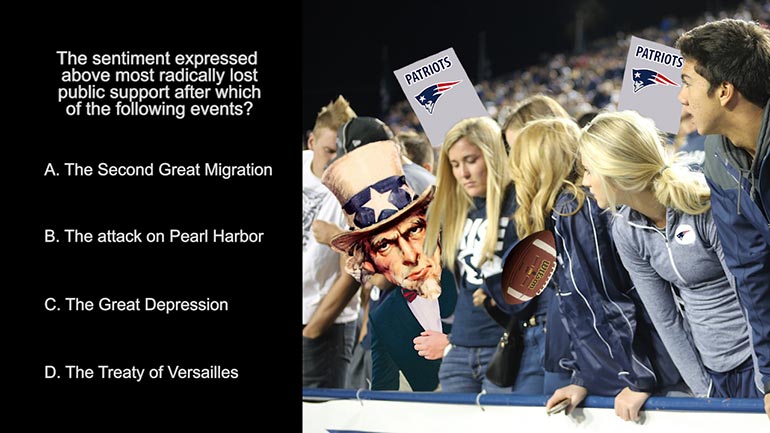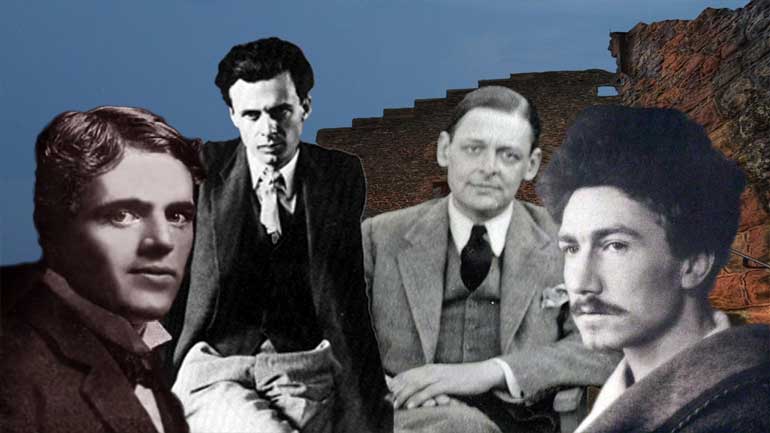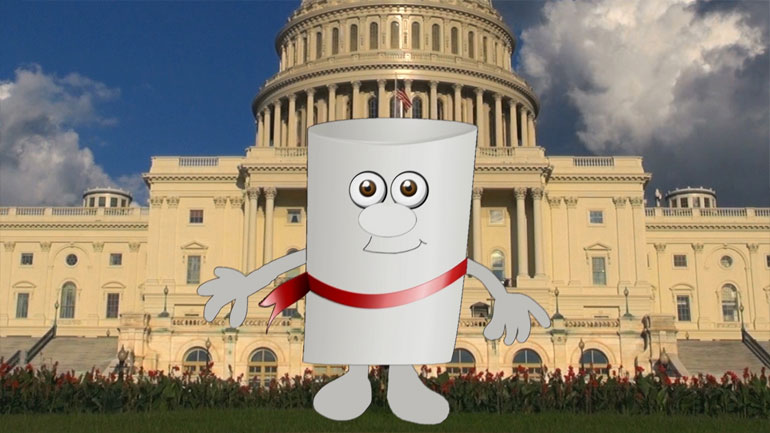ShmoopTube
Where Monty Python meets your 10th grade teacher.
Search Thousands of Shmoop Videos
Resistance to Overseas Involvement Prior to WWII Videos 3 videos
AP U.S. History Exam 2.40. What does the image suggest about the United States' role in the League of Nations?
AP U.S. History Exam 2.41. How does the United States' position in the image suggest the foreign policy it would adopt in the years after World War...
AP U.S. History 2.2 Period 7: 1890–1945. The sentiment expressed above most radically lost public support after which of the following events?
AP U.S. History Exam 2.40 167 Views
Share It!
Description:
AP U.S. History Exam 2.40. What does the image suggest about the United States' role in the League of Nations?
Transcript
- 00:00
[ musical flourish ]
- 00:03
And here's your Shmoop du jour, brought to you by the Nobel Prize,
- 00:06
a reward for the invention of the silent clock tower.
- 00:12
All right, here's the picture.
- 00:15
All right, what does the image suggest about the United States' role
Full Transcript
- 00:18
in the League of Nations?
- 00:19
And here are your potential answers.
- 00:21
[ mumbles ]
- 00:26
All right. Well, President Wilson went into post-World War I
- 00:29
peace negotiations with plans
- 00:31
so noble that they earned him a Nobel Peace Prize.
- 00:35
Well, let's see how Wilson's plans for the League of Nations
- 00:38
became a little, uh...
- 00:39
disconnected from reality.
- 00:41
Does the image suggest that B -
- 00:43
the United States supported the positions of its allies
- 00:47
in the League of Nations?
- 00:48
Well, unfortunately, Wilson failed to gain sufficient Senate
- 00:52
support for joining the League,
- 00:54
so the U.S. became the missing piece
- 00:56
in a now incomplete bridge. How embarrassing.
- 00:59
That busts up B.
- 01:00
Does the image suggest that C -
- 01:03
the League needed the United States to separate
- 01:05
opposing nations?
- 01:07
Hmm. Well, all nations in the cartoon were on the same side
- 01:10
in World War I, so that throws a wrench in C.
- 01:13
Does the image imply that D -
- 01:15
the United States was the most powerful country
- 01:18
in the organization?
- 01:19
Well, actually, the U.S. is the smallest stone in the image,
- 01:22
which doesn't really suggest it'd have been the group's
- 01:25
most powerful nation.
- 01:26
Which means the image suggests that A -
- 01:29
the League of Nations was weakened by the United States'
- 01:31
refusal to join.
- 01:33
After the Senate failed to ratify the agreement,
- 01:35
all that remained of the League of Nations was a faulty
- 01:39
bridge desperately in need of its missing American-made piece.
- 01:42
So the answer is A.
- 01:44
Without the United States, the League of Nations remained
- 01:46
a largely ineffective organization,
- 01:48
leaving its engineers scrambling in search of
- 01:51
a sturdy plan for the future.
- 01:53
[ scraping ]
Related Videos
Ever heard of a "living document"? They eat and breathe just like the rest of us! They even walk around on their own two legs. Okay, fine—maybe t...
If the Puritans had gotten their way, religion would play a much larger role in lawmaking these days. Want to know more? Watch the video for all th...
What happened between the creation of the Articles of Confederation and the ratification of the current U.S. Constitution? This video analyzes the...
The Modernists thought the world had a lot of problems, and they were intent on fixing them—or at least talking about fixing them. Unfortunately,...
This video explains Federalism and the quest for a fair balance between state and national power. It covers the progression and compromises of Fede...







